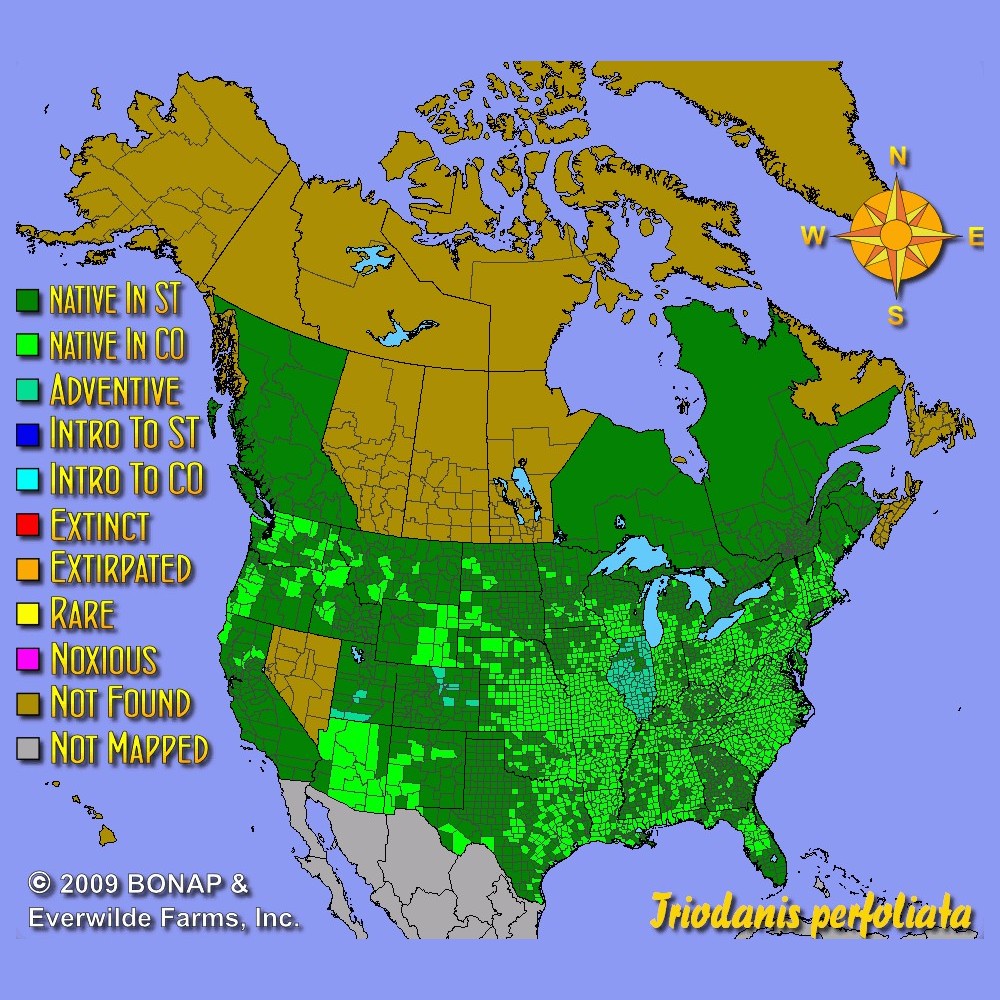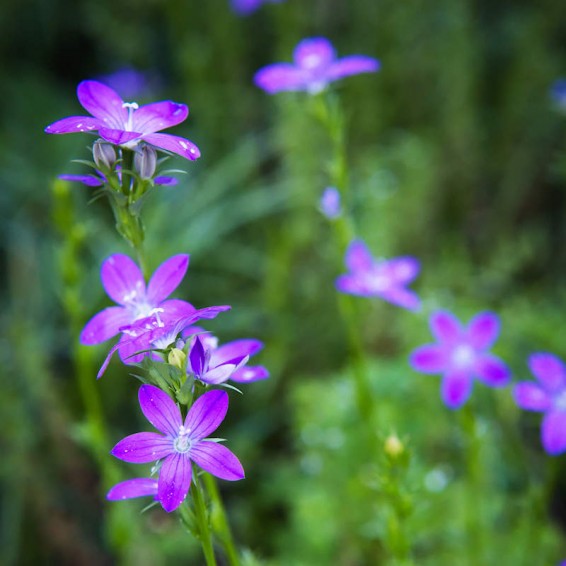Venus' Looking Glass Seeds
Triodanis perfoliata
- HOW TO GROW
- FAST FACTS
HOW TO GROW
Sowing: Direct sow in late fall, planting just below the surface of the soil. For spring planting, mix the seeds with moist sand and store in the refrigerator for 60 days before planting. Keep the soil lightly moist until germination.
Growing: Water seedlings occasionally until they become established. Control weeds, since this plant does not like competition. Mature plants grow well in drought and poor soil as well as shallow, rocky soil and sand. This plant may self-seed.
Harvesting: These blossoms do not perform well as cut flowers, and are best enjoyed outdoors.
Seed Saving: As the flowers fade, small pods will begin to form and soon split open. Since the seed is extremely tiny and soon blows away on the wind, harvest as soon as possible. Shake the mature pods over a container to remove the seed. Store the seed in a cool dry place.
FAST FACTS
Common Names: Clasping Venus' Looking Glass
Latin Name: Triodanis perfoliata
Species Origin: US Native Wildflower
Type: Native Wildflowers
Life Cycle: Annual
USDA Zones: 2, 3, 4, 5, 6, 7, 8, 9, 10, 11, 12
US Regions: California, Mountain, Arid/Desert, Plains/Texas, Midwest, Northern, Northeast, Southeast
Seeds per Ounce: 3,000,000
Stratification: Cold/Wet for 8 Weeks
Germination Ease: Stratify 8 Weeks
Sunlight: Full Sun, Part Sun
Height: 24 Inches
Color: Purple
Bloom Season: Blooms Late Spring, Blooms Early Summer, Blooms Late Summer
DESCRIPTION

HOW TO GROW
Sowing: Direct sow in late fall, planting just below the surface of the soil. For spring planting, mix the seeds with moist sand and store in the refrigerator for 60 days before planting. Keep the soil lightly moist until germination.
Growing: Water seedlings occasionally until they become established. Control weeds, since this plant does not like competition. Mature plants grow well in drought and poor soil as well as shallow, rocky soil and sand. This plant may self-seed.
Harvesting: These blossoms do not perform well as cut flowers, and are best enjoyed outdoors.
Seed Saving: As the flowers fade, small pods will begin to form and soon split open. Since the seed is extremely tiny and soon blows away on the wind, harvest as soon as possible. Shake the mature pods over a container to remove the seed. Store the seed in a cool dry place.
FAST FACTS
Common Names: Clasping Venus' Looking Glass
Latin Name: Triodanis perfoliata
Species Origin: US Native Wildflower
Type: Native Wildflowers
Life Cycle: Annual
USDA Zones: 2, 3, 4, 5, 6, 7, 8, 9, 10, 11, 12
US Regions: California, Mountain, Arid/Desert, Plains/Texas, Midwest, Northern, Northeast, Southeast
Seeds per Ounce: 3,000,000
Stratification: Cold/Wet for 8 Weeks
Germination Ease: Stratify 8 Weeks
Sunlight: Full Sun, Part Sun
Height: 24 Inches
Color: Purple
Bloom Season: Blooms Late Spring, Blooms Early Summer, Blooms Late Summer





